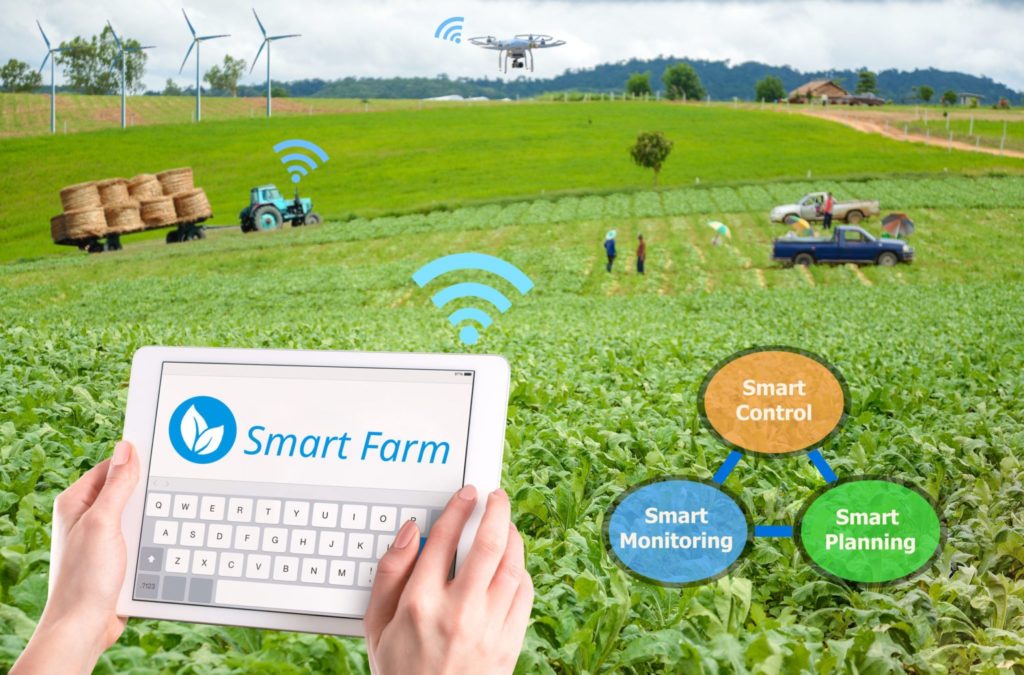Flat No.3, E-Building, Suyog Nagar, Janwadi, Pune - 411016
cognitosolutionspune@gmail.com
+91 8329175080
Agriculture Automation
Increase Yields and Productivity with Agriculture Automation
Today’s agricultural automation lies at the end of a long evolution of mechanization throughout the history of agriculture. The Food and Agriculture Organization of the United Nations (FAO) defines mechanization as the use of all means of machinery and equipment, from simple and basic hand tools to more sophisticated and motorized machinery, in agricultural operations. With mechanization, therefore, only the performing part of agricultural work is automated, and the degree of automation increases as we move from basic hand tools towards motorized machinery.
Why Is Agriculture Automation Important?
Very few industries in modern society face the number of challenges seen in the agriculture sector. Many external forces wreak havoc on the farm business, and all are completely out of the business owner’s control. Weather, drought, pests, and disease constantly hammer agriculture. They augment the standard risks any business faces and put significant pressure on historically thin profit margins. Add to this the current stagnation in the available workforce, which was significantly amplified by the COVID-19 pandemic, and you have a menu of challenges that seem almost impossible.

Benefits Of Agriculture Automation
One agrobot can change the future. Smart farm automation technology has great potential to be tremendously impactful. The solution to numerous global problems and the creation of eco-friendly approaches lies in this field of technology.
- The agriculture industry meets consumers’ demands.
We have mentioned that consumer demands and their preferences are changing. We all want food to be fresh and be quickly delivered to shops and markets. Agrobots allow farmers to save time and money.
- The labor shortage in the industry is decreasing.
Labor in some farming branches can take up to 50% of the overall cost. The labor shortage makes this situation even more dramatic. Using robots for seeding, harvesting, watering, and monitoring decreases the need to hire employees for numerous monotonous tasks.
- Agriculture is becoming more eco-friendly.
The usage of pesticides frightens lots of people, that is why agriculture is gaining a infamous reputation. Robots are shifting the rules of the game towards an environmentally-friendly approach: they can add pesticides with great precision, which is almost impossible when done by an actual human.
Why Choose US
Agriculture Automation
Agriculture automation is the use of technology to control and manage agricultural operations. This can include the use of robots, sensors, and software to automate tasks such as planting, watering, harvesting, and pest control.
Automation can help to improve the efficiency, productivity, and sustainability of agriculture. It can also help to reduce the environmental impact of farming.
Here are some specific examples of how automation is being used in agriculture:
- Drones: Drones can be used to survey crops, monitor pests and diseases, and apply pesticides and herbicides.
- Robots: Robots can be used to plant, water, harvest, and weed crops.
- Sensors: Sensors can be used to monitor soil moisture, temperature, and light levels.
- Software: Software can be used to collect and analyze data from sensors and make decisions about crop management.



Interested In Our Service?
Contact Us For Information About Agricultural Automation
Cognito Solutions is committed to helping farmers in Pune to adopt agriculture automation and improve the sustainability of their farms. We are confident that our solutions can help farmers to increase yields, reduce costs, and protect the environment.
Cognito Solutions provides the best product, the benefits of Agriculture Automation
- Increased yields: Automation can help to increase yields by reducing labor costs and improving efficiency. This is because automation can perform tasks more accurately and consistently than humans, and it can also work longer hours without getting tired.
- Improved efficiency: Automation can help to improve efficiency by reducing the need for human labor and by automating tasks that are time-consuming or difficult to do manually. This can free up farmers to focus on other tasks, such as marketing and sales.
- Reduced environmental impact: Automation can help to reduce the environmental impact of farming by reducing the use of pesticides and herbicides. This is because automation can be used to apply pesticides and herbicides more precisely, which reduces the amount of chemicals that are used.
- Improved animal welfare: Automation can help to improve animal welfare by reducing stress and providing better care. For example, robots can be used to milk cows without having to manually restrain them.
- Increased profitability: Automation can help to increase profitability by reducing costs and increasing yields. This can make farming more sustainable and help to ensure a secure food supply for future generations.
Cognito Solutions
- Flat No.3, E-Building, Suyog Nagar, Infront of BSNL Staff Quarters, Janwadi, Pune - 411016
- +91 8329175080
- cognitosolutionspune@gmail.com
